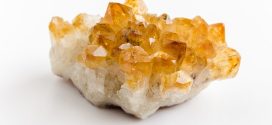Trees have been humankind’s best friend, as they have provided us with shade, fruits, wood and the most important oxygen. Trees play an important role in sustaining various forms of life and they are also relevant in terms of aesthetics. Without trees, the world would cease to exist, as we know it now. The importance of trees is even more in 21st century when humanity is fighting climate change and ever increasing pollution.
However, just like most other things, there are always exceptions. This applies to trees as well, as some of them can actually be dangerous to your health and life. For your safety, here’s a quick look at some of the most dangerous trees that can actually kill you.
Manchineel tree – This is primarily found across tropical southern North America and northern areas of South America. Its fruits and leaves are similar to that of an apple tree, which is why it is referred to as ‘manzanilla de la muerte’ in Spanish, meaning ‘little apple of death’. Manchineel tree is one of the most dangerous trees in the world, as it has toxic milky-white sap in its bark, leaves and fruit. Exposure to the skin can cause blisters and eating the fruit can be fatal.
Suicide tree – This is found primarily in India and southern Asia. It usually grows in marshy areas and coastal salt swamps. Its technical name is cerbera odollam. It’s called as suicide tree because its fruit contains a potent poison. The poison has been used for suicides and murders on several occasions. The fruit contains cerberin that blocks calcium supply to heart muscles, resulting in heart failure.
Strychnine Tree – A deciduous tree, strychnine tree is primarily found in India and Southeast Asia. The seeds of its fruit contain alkaloids strychnine and brucine, which are highly poisonous. The bark of the tree also has brucine along with other poisonous compounds. In earlier times, the poison derived from the seeds was used for making poison tipped arrows.
Gympie stinger – Technically referred to as dendrocnide moroides, Gympie stinger is native to rainforest areas located in north-east Australia. It has also been seen in certain parts of Indonesia. The leaves and twigs are covered with silica tipped hairs that contain a potent neurotoxin. Significant exposure, coupled with lack of medical care, can be fatal.
Bottle tree – It’s called so because the tree resembles the shape of a bottle. It is native to Namibia and southern Angola. The plant produces a watery compound that is known to be highly toxic. Tribal people use the poison on their arrows for hunting purposes.
 Newspatrolling.com News cum Content Syndication Portal Online
Newspatrolling.com News cum Content Syndication Portal Online






